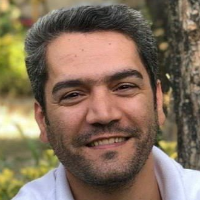A New Stochastic Model for Emergency Location Problem with Minimax Regret Model (Case Study: Mashhad)
The recent increase in the number of natural disasters, earthquake in particular, underlines the need to investigate the problem of emergency location. In this study, a new hybrid approach is presented for emergency location-allocation problem which incorporates GIS, system dynamics, Coburn and Spence model, and stochastic programming. In the proposed approach, first, the candidate places are identified based on a number of indices using GIS. Since the emergency location demand is considered as an uncertain parameter depending on different scenarios of the earthquake, in the next step, a combination of system dynamics and the casualty estimation model proposed by Coburn and Spence is used to estimate the demand. Then, proposing a stochastic location-allocation model, the demand is assigned to the candidate places determined by GIS. Finally, the minimax regret model is used to identify the final locations.
-
Evaluation and Ranking of Iran’s Railway Regions Using Window Data Envelopment Analysis Approach Model
Naser Zourmand Baghdar, *, Morteza Pakdaman, Amir Hajimirzajan
Journal of Transportation Research, Summer 2025 -
Identification and Analysis of Stakeholders in Mashhad’s Shohada Square Project based on Fuzzy Clustering
Zahra Najiazimi *, Mahboobeh Dehghan, Zahra Sohrabi
Journal of Urban Structure and Function Studies, Autumn 2025 -
Scrutinize staff burnout in the medical staff of hospitals based on the Fuzzy hypothesis test
Amirhosein Okhravi *,
Journal of Sustainable Human Resource Management, -
Designing a dynamic model of brand equity with a focus on fake news and customer knowledge at Coca-Cola
Davood Arian Nezhad, *, Hadi Bastam, Ali Hosseinzadeh
Management tomorrow,



